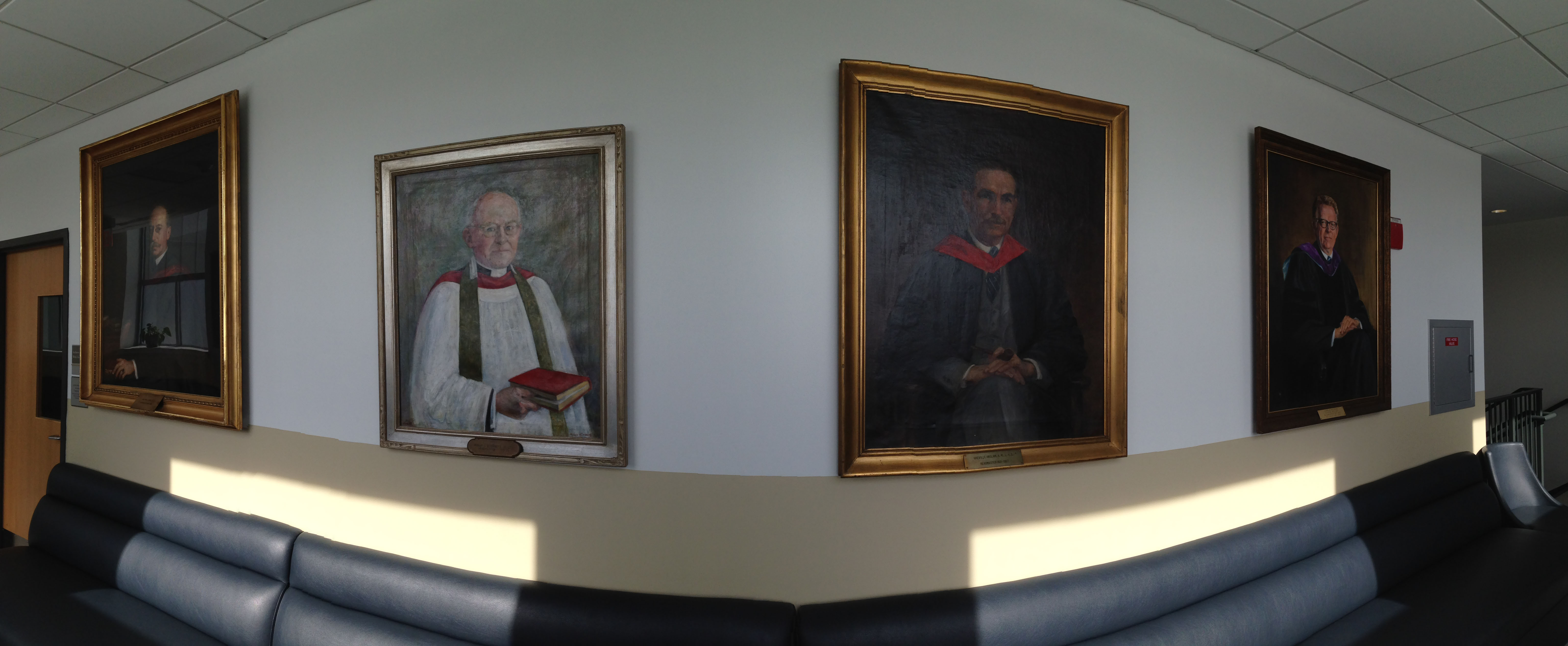Alexa D’Ambrosio ’17, Sonam Saxena ’17: For the past 229 years, each headmaster at the Episcopal Academy has played a pivotal role in supporting the school and fostering a sense of community. As a tradition of showing gratitude, EA has commemorated the headmasters’ service by hanging a painted portrait of each outside the Sherrard Board Room in the Crawford Campus Center.

Photos courtesy of Leigh Adelizzi ’15
“Since the school was founded in 1785 there have only been 11 heads of school,” including Dr. TJ Locke, explained Lenard Haley form the Development Office. “When they retire they have a portrait done.” After the move to the Newtown Square Campus, all paintings were restored. “The paintings were difficult to hang,” says Haley, due to their large and varying sizes. The wall space to hang the portraits was now limited by about sixty percent due to the many glass windows throughout campus. As of now, these headmaster paintings are displayed outside of the Sherrerd Board Room in the Crawford Campus Center. Originally when hung there, the paintings were getting overheated by the strong sun projecting through the window. As a result, the school installed e-glass for protection so that the sun would not deteriorate the historical portraits.
Looking at these paintings, one can see the timeline and advancement of Episcopal throughout the years. Because the time period affected the way in which the portraits were made, each one is unique in style. As time progressed, photography allowed the painters to base the portrait mostly off a photograph instead of the headmaster posing in person for hours on end. For example, Headmaster Hamilton Clark did pose a bit for the portrait. However, for a substantial part of the portrait, the artist “probably did it from a picture,” tells Haley.
As we all see these paintings and artifacts hung across the walls, very few know the story behind them. To help solve this problem, Haley is hoping to write short blurbs beneath each painting to help preserve Episcopal’s history and keep the legacy alive. He wondered out loud, “You kids, you know about Mr. Clark now, but what about people fifty years from now?” Haley states, “We’re going to have a little story underneath [the paintings],” acknowledging that “restricting it to around fourteen sentences will be a hard thing to do,” with so much information to incorporate.
These portraits are only part of the tremendous effort that Episcopal has made to display aspects of EA’s history. Clark, with help from Haley, created memorial plaques for each of the buildings. Haley explained, “I wrote something under each [building].” EA’s campus center lobby already has some historical artifacts on display including an artifact from the Civil War and a precise copy of the founder letter of Episcopal Academy. Looking ahead, EA hopes to “to get some archives hung on the walls.” Haley would just “hate to see some of this history lost!” However, with a little help, Haley is confident in this project. He hopes to see “students, alumni, [and] teachers” assist in the endeavor. He emphasized that while it may take quite some time, “It has to be done the right way.”
In displaying EA archives throughout the campus, EA will allow visitors, parents, and students to have the opportunity to learn about significant people in the history of the school, whether they be a member of the faculty, a founder, or a student. Haley explains that there is much history of which we are unaware. William Webster, whose name is well known from the Webster’s dictionary, was a teacher at EA for six months. Robert Morris, one of the founders of our Episcopal Academy, was also a signer of the Declaration of Independence and financed the Revolutionary War. One EA graduate fought in the Vietnam War, and another was one of the Iran hostages during Carter’s Presidency.